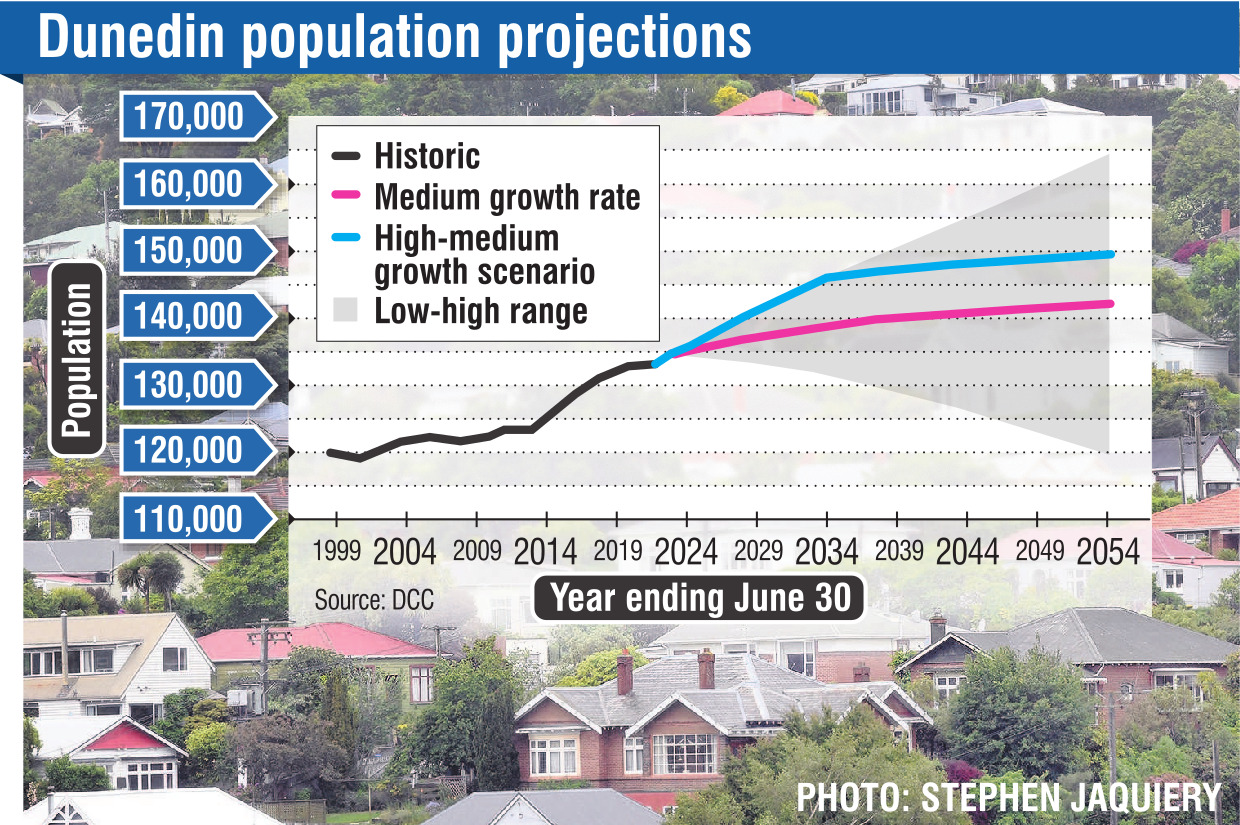
The Dunedin City Council needs to make significant forecasting assumptions before it drafts the 2025-34 long-term plan.
This helps it work out housing capacity and levels of infrastructure that could be required, and it can influence future land use.
A report to be discussed at tomorrow’s council strategy, planning and engagement committee meeting said predicting population growth had become increasingly challenging during the past decade.
That was because of New Zealand’s changing levels of migration.
"Overall, New Zealand has been experiencing high net migration over the past two years, which followed record lows during border closures due to Covid-19", the report said.
New Zealand had provisional net migration of 108,582 in the year to June 2023 and this fell to 71,710 in the next 12 months.
That was still higher than the average net migration of 56,532 between 2014 and 2020, the report said.
Migration is particularly relevant for growth in Dunedin, which has a low birth rate.
New Zealand’s level of international migration had been unpredictable in the past five years and this would create a high degree of uncertainty with any population projections used for the city’s nine-year plan, the report said.
In October last year, Statistics New Zealand provisionally estimated Dunedin’s population at 134,600.
A high-growth scenario would push it up to 146,100 in 2034.
Last year’s census had Dunedin’s usually resident population at 128,901, compared with 126,255 five years earlier.
As things stand, the council presumes Dunedin’s population growth will follow a high track until 2034 and then medium growth for the following 20 years.
Council staff have recommended maintaining this position.
"The risks of under-estimating growth include inadequate provision of council services and a potential follow-on impact on the attractiveness of Dunedin to new residents and visitors", the report said.
Risks from over-estimating growth included using funds inefficiently by providing new or upgraded infrastructure when it was not yet needed.
One thing which there is a low level of uncertainty about is Dunedin’s growing ageing population.
The 75+ age group is expected to grow from 8% of Dunedin’s population this year to 15% in 2054.
For the proportion of the population aged 65 or over, the level is expected to shift from 19% this year to 24% by 2054.
Economically, Infometrics indicated forecast growth of 1.6% a year to 2034.
Professional, scientific and technical services were forecast to grow 4% a year, health 3.2%, retail 3%, public administration 2.9%, construction 2.9% and transport 2.8%.












